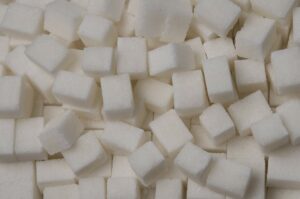
Sales of new commercial vehicles (trucks and special vehicles) in Ukraine in November 2025 decreased by 10% compared to the same month in 2024, to 982 units, which is also 18% less than in October 2025, according to UkrAvtoprom on its Telegram channel.
The leader in this market in November was MAN with sales of 118 vehicles, which ranked fourth in November last year and October this year (89 and 90 units, respectively), followed by last year’s leader Renault with 117 units. (233 units last year), and FIAT came in third with 88 units, which ranked 11th last November with 42 vehicles.
Next in the ranking are Citroen with 85 units (in November 2024, it was in second place with 143 cars) and Mercedes-Benz with 79 units (last year, it had 100 cars and was in third place).
According to UkrAvtoprom, a total of 10,835 new vehicles were added to the Ukrainian fleet of trucks and special-purpose vehicles in January-November, which is 6% less than in the same period last year.
As reported, in 2024, according to UkrAvtoprom, 12,900 new commercial vehicles were registered in Ukraine, which is 14% more than in 2023.

Sales of new commercial vehicles (trucks and special-purpose vehicles) in Ukraine in October 2025 increased by 11% compared to the same month in 2024, reaching 1,203 units, which is also 8% more than in September 2025, according to UkrAvtoprom’s Telegram channel.
As in the previous year, Peugeot was the market leader in October with 115 units sold, compared to 246 units sold in October 2024.
Peugeot took second place with 121 cars. Last October, the brand was eighth in the ranking with 60 cars.
Citroen took third place in the ranking with 95 units, which is 16 cars less than in October 2024, when the brand was second in the ranking. MAN came in fourth with sales of 90 cars, which is 14 units more than in October last year.
Volvo also made it into the top five most popular new special-purpose vehicles with 84 units, which was 13th in October last year with sales of 17 vehicles.
According to UkrAvtoprom, a total of 9,853 new vehicles were added to the Ukrainian fleet of trucks and special-purpose vehicles in January-October, which is 5.5% less than in the same period last year.
As reported, in 2024, according to UkrAvtoprom, 12,900 new commercial vehicles were registered in Ukraine, which is 14% more than in 2023.

Global chip sales in August increased 21.7% from the same month last year to $64.88 billion, according to a press release from the Semiconductor Industry Association (SIA). Compared to July, the rebound was 4.4% (from a revised $62.14 billion).
“Global semiconductor sales continued to rise in August. Asia-Pacific and the Americas continue to drive the rebound, with particularly strong growth in memory and logic chip sales,” said SIA President and CEO John Newfer, quoted in the report
Sales in the Americas in August were up 25.5% year-over-year, with China up 12.4%, Europe up 4.4%, and Asia-Pacific and other regions up 43.1%. At the same time, a 6.9% decrease was recorded in Japan.
Chip sales relative to July increased in the Americas by 4.3%, in APAC by 6.9%, in the PRC by 3.3%, in Japan by 2%, and in Europe by 1%.
SIA represents about 99% of the U.S. semiconductor industry and about 66% of chip makers from other countries.

Sales of new passenger cars in Ukraine in January-September 2025 amounted to 54,300 units, which is almost equal to last year’s figures for this period, according to AUTO-Consulting.
“Throughout the year, the car market lagged significantly behind last year’s volumes. It all started with the cancellation of numerous USAID assistance programs, which immediately began to affect car deliveries. Other factors were added later. And only in the summer did the car market begin to return to last year’s track. And in September, it practically managed to catch up with the figure for the first nine months,” according to a statement on the information and analytical group’s website.
At the same time, according to analysts, passenger car sales in September fell by 3% compared to August 2025, to 6,737 units.
AUTO-Consulting notes that in terms of quality and structure, there were “dramatic changes” in this market in September, in particular, BYD is now the market leader, having managed to capture 14% of the market and overtake Toyota.
“Just a month ago, Toyota finished with these figures, and as soon as dealers slowed down a little, BYD surged ahead,” the group states.
There were no other changes in the top five compared to August – Volkswagen, Renault, and Skoda remained in the same positions as a month earlier, while BMW was one step ahead of Hyundai, taking sixth place without even increasing sales.
“There have also been changes among the popular models. The current bestseller is the VW ID. Unix, which has pushed even the “favorite” of all corporations, the Renault Duster, into second place. But it seems that these are not the final figures, as the BYD Seal and BYD Leopard 3 are already hot on their heels,” the report says.
AUTO-Consulting notes that in September, nine of the twenty most popular car models on the market were electric vehicles from the Chinese market.
As reported, according to the Ukravtoprom association, in September 2025, initial registrations of new passenger cars increased by 20% compared to September 2024 and by 1% compared to August 2025 – to more than 6,800 units, while in January-September they decreased by 0.3% to 52,900 units.

In January-June 2025, Corteva Agriscience, an international agricultural science and technology company, increased its net sales in Ukraine by more than 10% compared to the first half of last year and became the leader in terms of absolute sales volumes among countries in Central and Eastern Europe, the company’s press service reported.
“These results are the result of the coordinated work of the Ukrainian team, which continues to provide farmers with modern solutions adapted to today’s challenges. At the same time, they demonstrate that Ukrainian farmers, despite the difficult conditions of war, are actively investing in productive and innovative technologies to develop their production,” the company emphasized.
Corteva Agriscience specified that in January-June 2025, net revenues from the sale of Pioneer® brand corn and sunflower seeds increased by more than 13% compared to the same period in 2024. The plant protection segment also recorded an increase in sales revenues of more than 5%.
“Ukrainian farmers continue to impress the world with their resilience and determination. Despite climate challenges, instability, and difficult conditions, they do not stop — they plan, sow, and work. At Corteva, we are honored to be there for them during these difficult times and are proud that Ukrainian farmers are increasingly choosing our innovative and effective solutions that support their efforts and help ensure food security for the country and the world,” said Alexander Dmitriev, head of Corteva Agriscience in Ukraine.
Corteva Agriscience is a global agricultural company. It offers comprehensive solutions to maximize crop yields and profitability. It has more than 150 research facilities and more than 65 active ingredients in its portfolio. Its representative office in Ukraine includes a central office in Kyiv, a research and development center in the village of Lyubartsi (Kyiv region), and a seed production complex in the village of Stasi (Poltava region).
In April 2022, the company decided to leave the Russian market due to the full-scale war unleashed by the Russian Federation against Ukraine.
Since 2022, Corteva has allocated more than $2 million to help those affected, donated thousands of seed units to farmers working near the front line, launched a soil testing program to ensure safe crop cultivation despite war-related contamination, and provided 350 rural women with training and grants through the TalentA program.

Ukrainian sugar factories are capable of producing 2.2 million tons of sugar, but processors are currently unable to sell all their products, so they are maintaining production at 1.2-1.3 million tons. However, this can only happen if domestic consumption returns to pre-war levels and new export markets open up, said Yana Kavushevska, head of the National Association of Sugar Producers of Ukraine “Ukrtsukor.”
“If we have 30 factories that can produce sugar, probably 2.2 million, if we had markets where we could sell this sugar steadily and with some profit that satisfies producers, that would be quite good. This is what we can optimally grow and process. The optimal capacity of existing sugar factories is 2.2 million tons,” she said on Ukrainian Radio.
She noted that the main problem for sugar producers now is export markets, as the domestic market will not be able to absorb the entire volume of production.
“We really hope that the domestic market will recover to at least its pre-war level by 2022. That would be 1.2-1.3 million tons,” Kaushevska said.
The expert clarified that before the full-scale invasion, even after the loss of part of the territories in Donetsk, Luhansk regions, and Crimea, domestic sugar consumption in Ukraine amounted to 1.2-1.3 million tons. However, after the start of the full-scale invasion, domestic consumption fell to 900,000 tons. Thanks to the opening of the European market during the autonomous trade measures (2022-2024 – IF-U), sugar producers were able to supply 300,000 tons to Europe.
“We now have restrictions (on sugar supplies to the EU – IF-U), and accordingly, we need to decide where to send these 300,000 tons,” she said.
The head of Ukrtsukor stated that in 2025, Ukrainian farmers reduced the area under sugar beet cultivation to 220,000 hectares, which is 15.4% less than last year’s figures.
According to her, Ukrainian processors were very disappointed with the quotas for sugar supplies to the European Union, which were announced in the spring of 2025 and were planned at 67,000 tons. Currently, this volume has been increased to 107,000 tons of sugar, but in previous years, deliveries to the EU reached 473,000 tons.
The head of the industry association recalled that in 2024, the sugar industry showed record export figures – over 740,000 tons, thanks to which Ukraine received over $420 million.